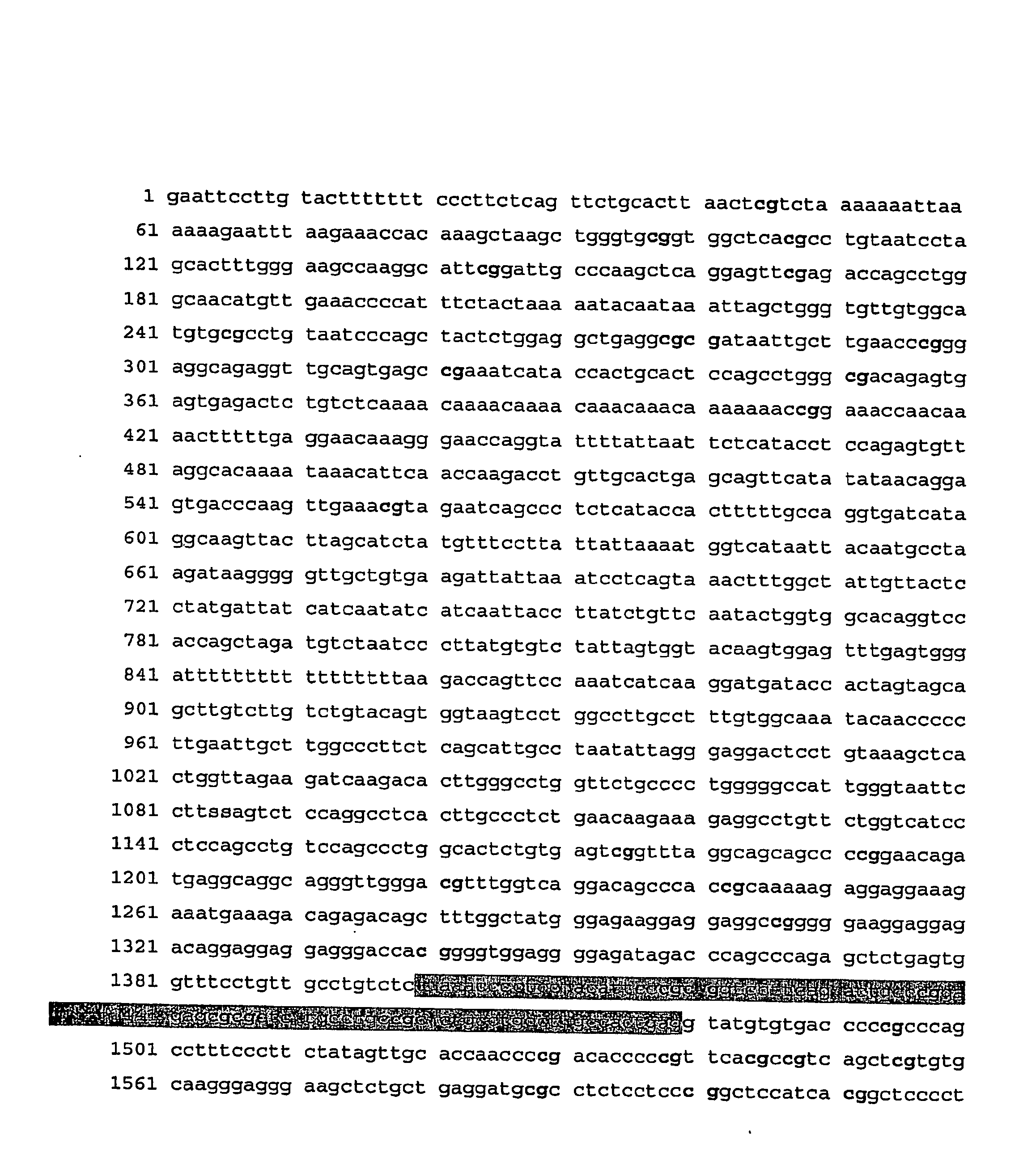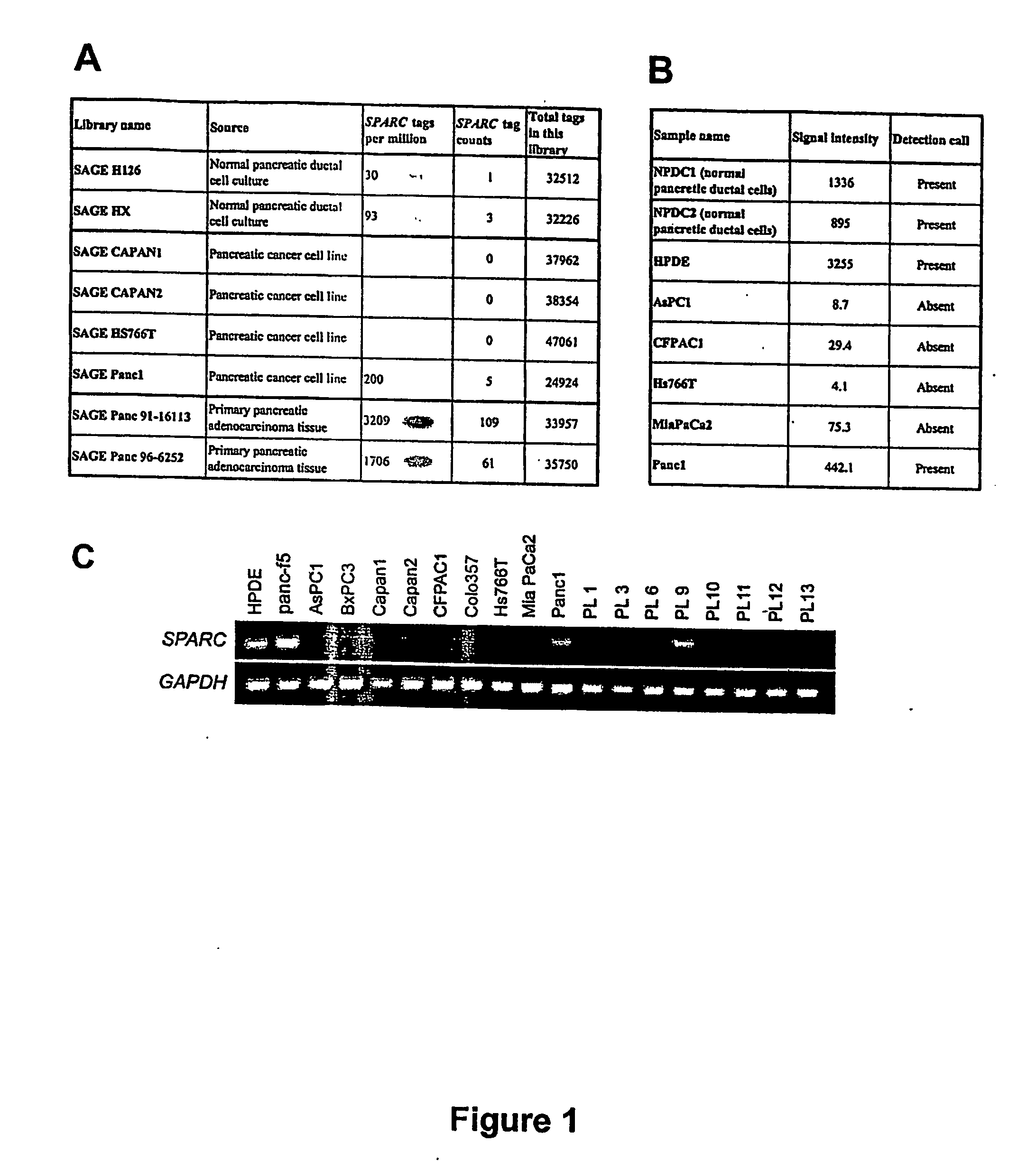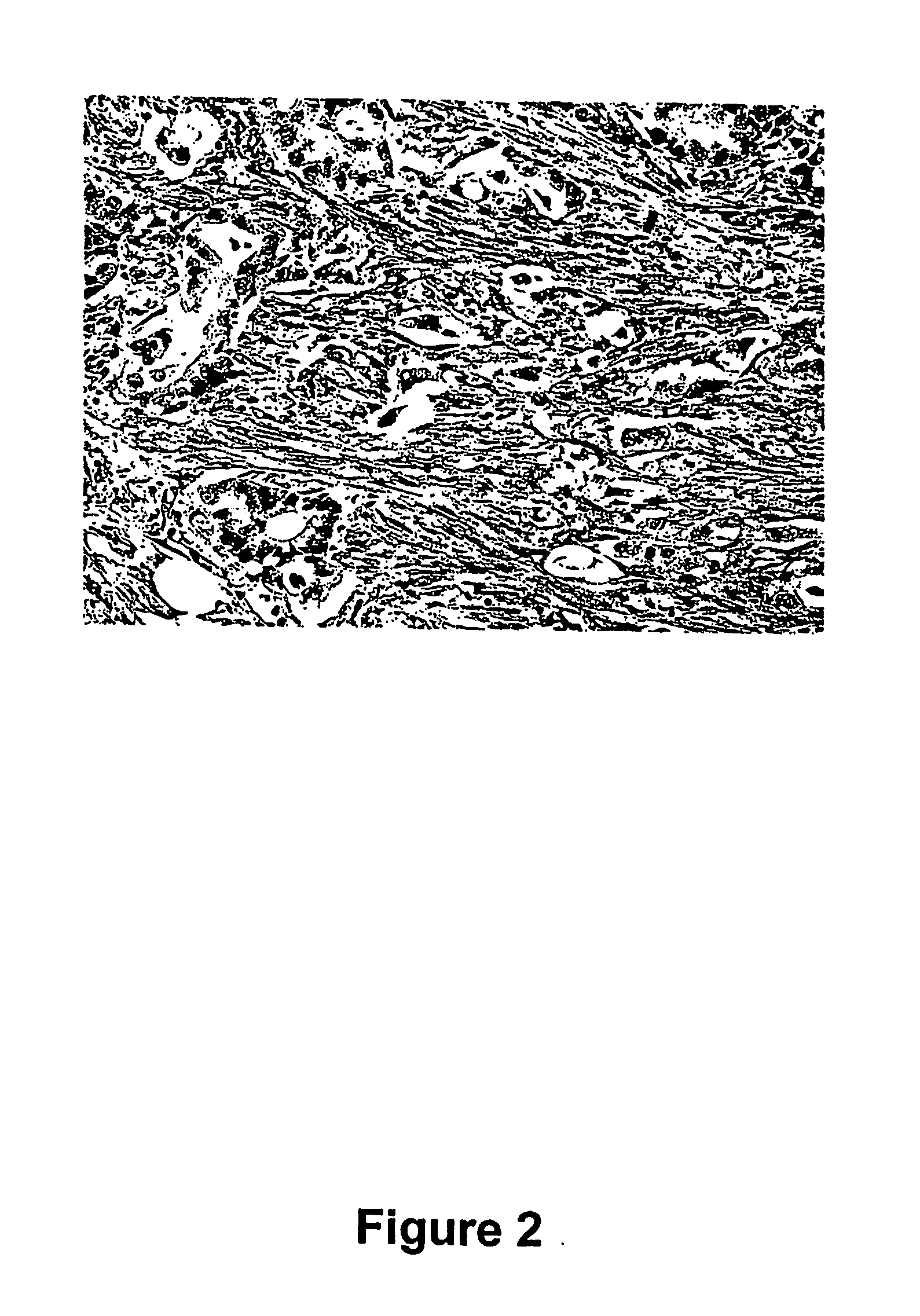Methylated Gene Biomarkers For Detecting Cancer
a gene and biomarker technology, applied in the field of methylated gene biomarkers, can solve the problems of high pancreatic cancer mortality, lack of effective screening methods, and 5-7 fold greater risk of pancreatic cancer, and achieve the effect of improving patient survival rates
- Summary
- Abstract
- Description
- Claims
- Application Information
AI Technical Summary
Benefits of technology
Problems solved by technology
Method used
Image
Examples
example 1
Gene Expression Analysis of SPARC in Pancreatic Cancer by Serial Analysis of Gene Expression (SAGE) and Oligonucleotide Microarrays
[0108] Oligonucleotide microarrays have been used to identify genes that are induced 5-fold or greater by treatment of pancreatic cancer cells with 5Aza-dC (Sato et al., manuscript submitted). SPARC was one of the genes we identified using this approach. We therefore analyzed the gene expression and methylation status of the SPARC gene in pancreatic cancer. First, we searched an online SAGE database (http: / / www.ncbi.nlm.nih.gov / SAGE / ) to determine the gene expression patterns of SPARC in short-term cultures of normal pancreatic ductal epithelium, pancreatic cancer cell lines, and primary pancreatic cancer tissues. The SAGE Tag to Gene Mapping analysis showed that the Hs.111779 tag (ATGTGAAGAG) corresponding to the SPARC gene was present in both of two libraries from normal pancreatic duct epithelial cell cultures (H126 and HX), whereas the SPARC tag was...
example 2
Expression of SPARC mRNA in Pancreatic Cancer Cell Lines and Primary Fibroblasts
[0110] RT-PCR was preformed to examine the expression of SPARC mRNA in a panel of 17 pancreatic cancer cell lines and in primary fibroblasts derived from pancreatic adenocarcinoma tissue (panc-f5). The SPARC transcript was detectable in a non-neoplastic pancreatic ductal epithelial cell line (HPDE) and was strongly expressed in the pancreatic cancer-derived fibroblasts, whereas the expression was absent in 15 (88%) of the 17 pancreatic cancer cell lines (FIG. 1C). Of note, the RT-PCR results of 7 pancreatic cancer cell lines (AsPC1, Capan1, Capan2, CFPAC1, Hs766T, MiaPaCa2, and Panc1) parallel the SAGE and / or oligonucleotide array data on these same cell lines. These results demonstrate the striking difference in SPARC expression between most pancreatic cancer cell lines and stromal fibroblasts.
example 3
Immunohistochemical Analysis of SPARC Expression in Pancreatic Carcinoma
[0111] The expression of SPARC protein was examined in 25 primary pancreatic adenocarcinoma tissues by immunohistochemical labeling with an anti-SPARC monoclonal antibody. In 19 (76%) of 25 cases, moderate (++) to strong (+++) SPARC expression was found in the peritumoral stromal cells, presumably fibroblasts, and positive immunolabeling was identified as dark brown granules throughout the cytoplasm (FIG. 2). In these cases, the expression was most pronounced in the stromal fibroblasts immediately adjacent to the neoplastic epithelium, whereas the staining was weak or absent in the stroma distant from the infiltrating carcinoma. Immunolabeling of SPARC was also observed in neoplastic epithelium in 8 (32%) of 25 cases, but the labeling was weak and focal, with the exception of a single case in which 50% of the neoplastic cells strongly labeled. In the remaining 17 cases (68%), neoplastic cells did not label for ...
PUM
| Property | Measurement | Unit |
|---|---|---|
| Fraction | aaaaa | aaaaa |
| Fraction | aaaaa | aaaaa |
| Fraction | aaaaa | aaaaa |
Abstract
Description
Claims
Application Information
 Login to View More
Login to View More - R&D
- Intellectual Property
- Life Sciences
- Materials
- Tech Scout
- Unparalleled Data Quality
- Higher Quality Content
- 60% Fewer Hallucinations
Browse by: Latest US Patents, China's latest patents, Technical Efficacy Thesaurus, Application Domain, Technology Topic, Popular Technical Reports.
© 2025 PatSnap. All rights reserved.Legal|Privacy policy|Modern Slavery Act Transparency Statement|Sitemap|About US| Contact US: help@patsnap.com



